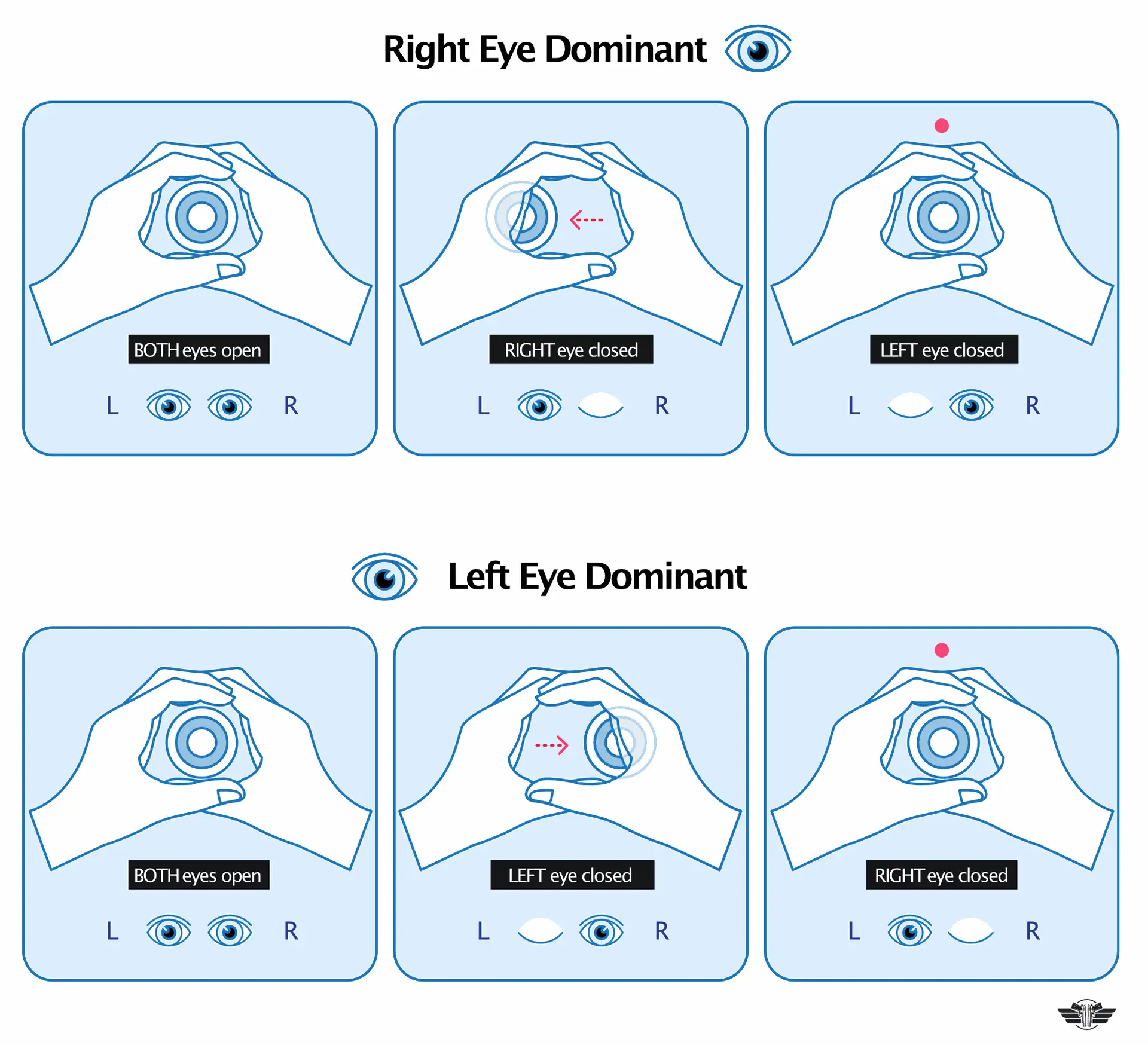When we talk about dominance in sports, we often think of dominant hand or dominant foot—but did you know your dominant eye also plays a crucial role in how you see, react, and perform on the court?
Whether you're shooting a free throw, making a no-look pass, or tracking a defender, your dominant eye helps your brain judge depth, distance, and angles. Understanding your visual dominance can fine-tune your basketball skills and help you adjust more effectively in game scenarios.
What is a dominant eye?
Your dominant eye (also called the "master eye") is the one that sends a stronger visual signal to your brain. Just like being right- or left-handed, most people have a naturally stronger eye that leads in visual processing.
In basketball, this can affect:
- Shooting alignment
- Passing angles
- Peripheral vision
- Rebounding judgment
- Reading plays or opponents
How to Find Your Dominant Eye
Here is a simple triangle test you can try anywhere:
- Extend both arms in front of you and create a small triangle between your thumbs and index fingers.
- Focus on an object (like a doorknob or light switch) through the triangle with both eyes open.

3. Without moving your hands, close your left eye. If the object stays in view, your right eye is dominant.
4. If the object jumps or disappears, reopen your left eye and close your right — if the object remains centered, then your left eye is dominant.
Why It Matters on the Court
1. Shooting Mechanics
A right-handed shooter with a left-eye dominance might unconsciously pull the ball slightly across the body or tilt the head while lining up. That misalignment can affect aim and consistency.
Adjustment tip:
- Align your shooting eye with the rim. You may need to slightly adjust your stance or release point.
- For some players, tilting the head subtly toward the shooting eye helps center their aim.
2. Passing & Awareness
Your dominant eye influences how you see your surroundings, especially peripheral vision. This is critical for fast breaks, cutting teammates, or anticipating passes.
Adjustment tip:
- Practice scanning the court and passing off both sides, not just your dominant hand side. Use cone or defender drills where you must rely on your non-dominant visual side.
3. Defence & Positioning
Reading your opponent’s movement and spacing relies on depth perception—your dominant eye helps you gauge how close or far someone really is.
Adjustment tip:
- Use defensive slides and 1-on-1 drills where you practice watching the offensive player's midsection while keeping your peripheral vision active.
Can You Train Your Non-Dominant Eye?
You can't change your dominant eye, but you can strengthen your visual awareness:
- Practice catching and passing with both eyes covered alternately.
- Use drills that require split vision, like dribbling while tracking off-ball movement.
- Use video feedback to check if your head or eyes lean consistently to one side.
Final Thought
Understanding your dominant eye is a small detail—but it’s often the small details that separate a good player from a great one. Whether you're a coach, parent, or player, this knowledge can help improve shooting accuracy, court awareness, and decision-making.
Next time you're on the court, take a moment to ask: Am I really seeing things from the best angle?
Bonus challenge: Try the triangle test with your team and let them guess each other's dominant eyes before testing—it's a fun and eye-opening warm-up!